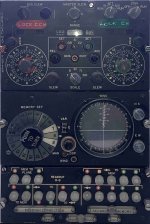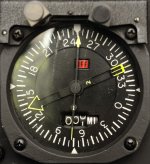ASW Mission Management
I was looking at the original requirement for the Sea King, which is only about 20 pages long, and saw fully half of a page was for a "computer" to allow the pilot to manage the mission. Interestingly, the computer required didn't exist yet, especially for relative plot (ie screening), tracking, and attacks. As for as I can tell it didn't exist until the mid to late 70s ASN-123 (without proper radar integration), or the mid 80s TANS in the RN HAS Mk 5.
Interesting, it also wasn't really needed at first because the RCN flew the aircraft like the USN. It was primarily an inner screen aircraft (the Tracker's took the outer screen), and was under control of Bonnie's Air Direction Center. As an aside, it's quite impressive that the RCN did 24/7 ops keeping 4 Trackers and 2 Sea Kings plus an H-04S Pedro, airborne. The much larger Essex ASW conversions weren't doing that.
A side note: the first three aircraft were delivered (directly from Sikorsky) without any ASW gear, as it wasn't available. The remainder, built by United Aircraft of Canada, had the same basic fit as the USN SH-3A (ASA-13 "computer" and AQS-10 sonar). They also had some serious personnel problems getting the capability to sea (which they had told the government was extremely important to be done quickly). It feels like if you changed the date on some of the documentation to 50 years later and changed Sea King to Cyclone then it would be the same...
With the lose of the Bonnie and the Trackers at sea, there was a pivot (although doesn't seem to be an explicit one) from the USN model to the RN model, of the helo being independent. It's not clear whether the Sea King got a nav because everyone thought it was a great idea to have a crew like the RN, or there were extra ex-RCAF navs kicking around in, but got a nav they did.
However, they didn't follow the RN in optimizing the back end for the nav's presence. Instead they took surplus Tracker ASN-501s, which were designed for the Tracker role in the cockpit, and stuck an extra console in the back for the nav to use them. Thus was born the procedures for making the 501 go clunk to get the aircraft where it needed to be; the ASN-501 was never optimized for relative nav, dipping, or attacks (although it could have been).
This culminated in a series of mods in the 70s (right as the USN was introducing the ASN-123) which resulted in a radar, new sonar, and side facing console. The radar and sonar were tied to the ASN-501, but not optimized.
TBC




